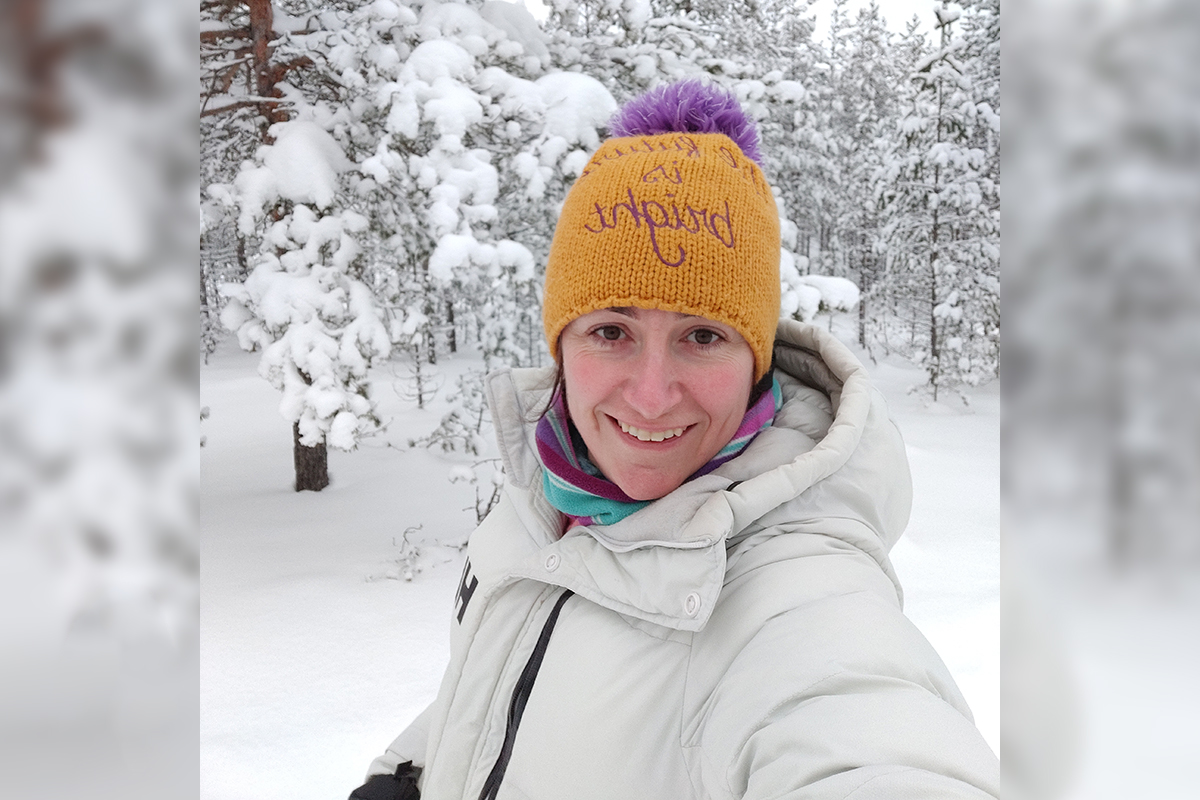My Oulu: The Italian teacher fell in love with the Finns talking about the weather

Originally Roman Sandra Marcelletti teaches Italian to adults as well as Italian-Finnish children at the Pinocchio school.
Sandra Marcelletti moved from Rome to Finland in April 2004, in fact on her husband’s birthday. At first, she thought she was applying to Rauma for a European civil service project.
“When I looked at the map, my sister asked why I was looking at Rauma as I was going to Ranua. That is how I accidentally ended up in Lapland,” says Marcelletti at her Tyrnävä home.
During the Ranua project, Marcelletti fell in love with a Finnish youth instructor.
“I also fell in love with the Finnish culture: after a distance at the beginning, friendships are deep. Safety distances are kept inherently, but still people sit naked and tightly in the sauna and know how to be quiet. And silence does not mean that there are specific problems in a relationship,” Marcelletti describes.
However, the constant way in which the Finns talked about the weather came as a surprise.
”Finns talk about the weather as much as Italians talk about food,” Marcelletti points out.
Rome is nice – for the tourist
After Ranua, then again via Rome, then through Kaakkuri and Kempele, Marcelletti is now a Tyrnävä-based resident. She has lived in the village for six years. She does not long to return to Italy, although she has her roots in the centre of Rome in the district of Trastevere, along with her father, a native Roman.
“As a tourist, it’s nice there, but everyday life is harder. For example, for me it took three hours to get to work to the other side of town,” Marcelletti explains the daily life of the metropolis.
A child’s personality can flourish in Pinocchio school
Today, Marcelletti teaches Italian at the Oulujoki civic college. In addition, she is one of three language teachers in the Italian-Finnish children’s group at Pinocchio school.
This is one of the teaching groups for multilingual children in the city of Oulu. In addition to teaching Italian, the school provides opportunities to learn communication and expression such as therapeutically oriented music.
At the Pinocchio school, special attention is paid to collaboration and group dynamics. The group includes 14 students from the first grades of elementary school to fifth graders, including Marcelletti’s 11-year-old son, although he is not taught by his mother.
“The children’s language level is already quite high – everyone can speak both Finnish and Italian, but we develop each child’s expression skills and personality through music and other arts, such as literature and writing. In the Pinocchio school group, there is no wrong or right way to exist or express oneself. A child can be really shy, but with the help of art, such as colors and drawing, they start to blossom like a flower”, Marcelletti describes.
No special prior background in arts is required.
“But this is how we awaken the creativity of the children, we Italians do not lack imagination,” Marcelletti points out with a laugh.
Marcelletti herself began to study Finnish with the help of children’s television programs such as the Moomins. She was put to the test in her early days in Oulu when she worked at McDonald’s.
“I had collected Finnish phrases on a note, but on my first day a customer ordered a burger and an ‘omppu’. I was bewildered by what an ‘omppu’ might be.”
But the shift manager, who is now godmother to Marcelletti’s son’s, whispered from behind her: “An ‘omppu’ means apple juice.”
Are there any tigrinya teachers?
– in Oulu, tuition in one’s mother tongue is provided as additional education for two hours a week for students whose mother tongue or home language is other than Finnish or Swedish
– mother tongue instruction in primary schools in the city of Oulu is provided in Arabic, Spanish, Hindi, Italian, Japanese, Chinese, Portuguese, Polish, French, German, Somali, Hungarian, Sámi and Romani
– Oulu Normal School offers teaching in Arabic, Russian, Greek and Vietnamese
– last autumn 435 students enrolled in the teaching of 39 different languages
– the largest language groups are Russian (70 pupils), Chinese (55) and Somali (50)
– teachers are currently being sought for Kurdish, Tigrinya and Estonian.